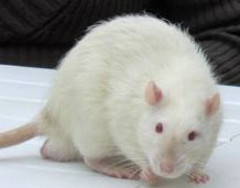
Fatigue can be caused by many things, such as physical and mental stress, disturbance in the circadian rhythm, and diseases. For example, we have all experienced the sense of fatigue, which can go for days or weeks, following about with the flu.
Unfortunately, the cause of fatigue following viral infection is not well understood. It was once thought to be caused by fever, but now in groundbreaking work published in PLOS ONE, scientists from the RIKEN Center for Life Science Technologies have used an animal model to demonstrate that fatigue sensation is caused not by fever, but by inflammation of brain tissue.
When rats were injected with a substance that mimics viral infection, the animals showed transient fever and decreased activity for days, in a way that resembles a flu infection. By giving the animals an anti-fever drug, the scientists were able to show that the sensation of fatigue is independent of the actual fever, since the animals showed decreased activity even when their fever was resolved.
The authors then showed that this sense of fatigue is mediated by interleukin-1β, a cytokine that acts as a cellular signaling mechanism in the body. This cytokine affects the central nervous system, leading to the lasting suppression of spontaneous activity that follows viral infection. The duration of the fatigue is determined by the interplay between interleukin-1β and interleukin-1 receptor antagonist, which is produced in the brain and suppresses inflammation by blocking the action of interleukin 1β. The authors also showed that reducing the action of interleukin-1 receptor antagonist in the brain delayed the recovery from reduced spontaneous activity.
These results suggested that impairment of the production of interleukin-1 receptor antagonist in the brain could induce the chronic neuroinflammation that leads to the sensation of fatigue. This study could potentially lead to the development of therapies to reduce neuroinflammation, thus freeing patients from sluggishness.
This research is published in PLOS ONE DOI: 10.1371/journal.pone.0090950
